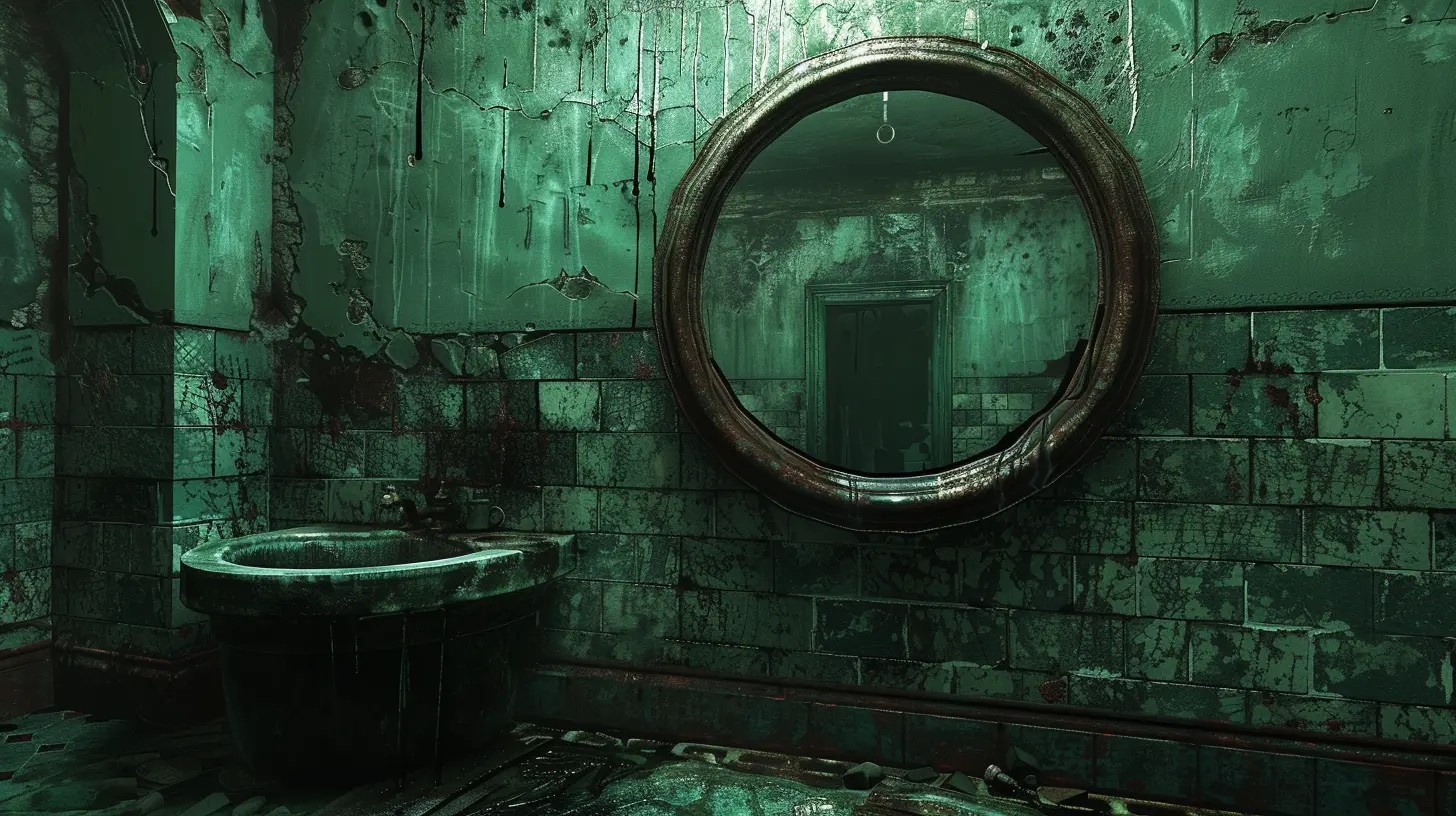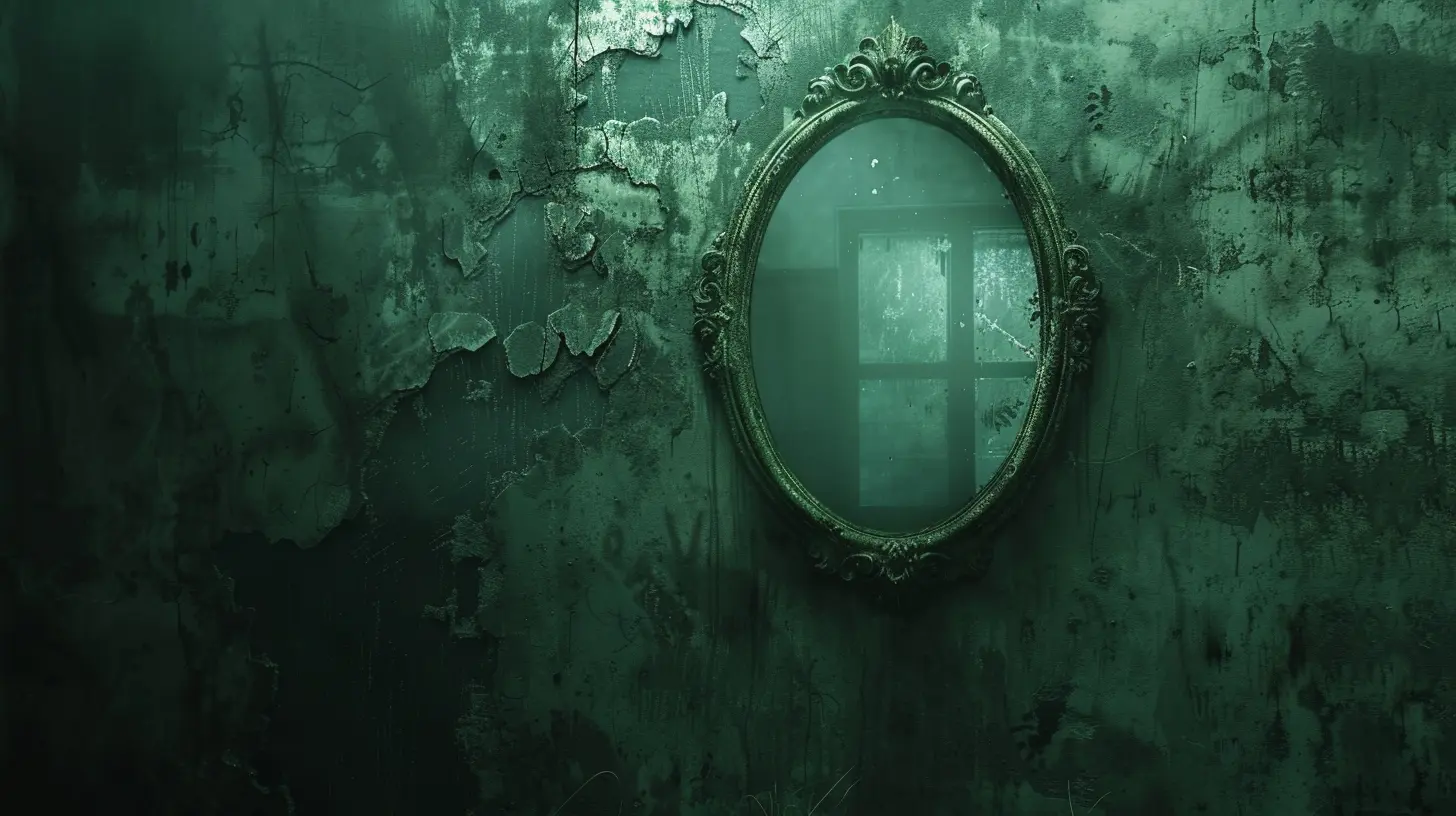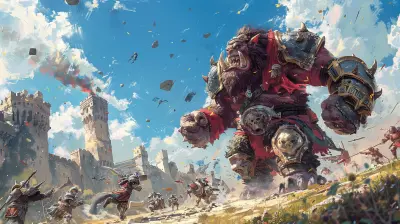The Use of Mirrors and Reflections in Horror Game Art Direction
28 September 2025
When it comes to horror games, every single detail matters. From the spine-chilling ambient soundtracks to the eerie lighting, developers meticulously craft every corner to keep you on the edge of your seat. But there’s one design element that often goes unnoticed despite its terrifying effectiveness: mirrors and reflections. Yep, those shiny surfaces hanging on the wall or lurking in puddles aren’t just there for decoration—they’re a psychological weapon in horror game art direction. So, why are mirrors such a powerful tool in the horror arsenal? Let’s dive in and take a closer look.
Mirrors: More Than Meets the Eye
Think about it—mirrors are inherently unsettling. They show a perfect duplicate of the world, but what happens when that duplicate starts to act on its own? It’s the stuff nightmares are made of! Mirrors in horror games often blur the line between reality and fiction, messing with the player’s perception in the most bone-chilling ways.The use of mirrors isn’t just about jump scares (although they’re great for that, too). They’re also a subtle storytelling tool, revealing deeper truths—about the environment, the characters, or even the player themselves. You never know if something’s hiding behind you, waiting for you to look, or if your reflection might move when you don’t. It’s like staring into the abyss and having it stare right back at you.
Reflections and the Fear of the Unknown
Reflections, whether in mirrors, glass, water, or even polished metal, are about more than just being spooky—they tap into a deeply ingrained fear of the unknown. Ever caught your own reflection out of the corner of your eye and felt a brief spike of panic? That’s because reflections are deceptive. They show what’s real... or maybe not.In horror games, developers amplify this unease. For instance, reflections might reveal something the naked eye can’t see, like a ghostly figure in the distance or a message scrawled across the wall. Sometimes, the reflection might shift ever so slightly, just enough for you to question your sanity. And when used sparingly, these moments create an unforgettable, hair-raising experience. It’s psychological warfare at its finest.
Why Mirrors Work So Well in Horror Games
Mirrors and reflections work for a few key reasons—and no, it’s not because they’re inherently creepy (although that does help). Their true power comes from how they play with the player’s expectations. Let’s break it down:1. Playing Mind Games
Mirrors can act as a bridge between the known and the unknown. You think they’re just a simple reflection, but then… BAM! Something moves that shouldn’t, or an unexpected figure appears. It’s a perfect way to mess with players’ heads without relying on cheap tricks.2. A Shared Fear Across Cultures
There’s something almost universal about the fear of mirrors. Cultures around the world have myths and superstitions related to mirrors and reflections—whether it’s the idea that mirrors can trap souls, summon spirits, or act as portals to other dimensions. Horror games tap into these age-old fears, using them as a way to connect with players on a primal level.3. Heightening Immersion
Mirrors in games, when done right, can make the world feel more real. Reflections add depth to the environment, making everything feel more lifelike—and when the game takes that realism and twists it, the scare lands even harder.4. Creating Unexpected Scares
Let’s face it: horror games are all about keeping you off balance. Mirrors are perfect for catching players off guard. They lull you into a false sense of security (after all, it’s “just” a reflection, right?) before turning the tables.
Iconic Examples of Mirrors in Horror Games
1. Silent Hill 3
Remember that haunting scene in Silent Hill 3? You walk into a room with a mirror, and at first, everything seems fine. Then, slowly, the room in the reflection starts changing—dark veins creep across the walls, consuming everything in their path. What makes it worse? You can’t escape. The mirror reflects the warped reality, trapping you in a growing sense of dread.2. Layers of Fear
This psychological horror game uses mirrors to toy with your perception of reality. Look into one, and you might see a twisted version of the protagonist. Sometimes, the reflection shows things you wish you hadn’t seen. It’s a brilliant example of using reflections to blur the line between reality and hallucination.3. Resident Evil Series
The Resident Evil franchise has its fair share of mirror scares. One moment you’re checking your surroundings, and the next, a zombie appears in the reflection. It’s a classic bait-and-switch tactic that never fails to get your heart racing.Designing Mirrors: A Technical and Artistic Feat
Creating believable mirrors and reflections in games is far from easy. Think about it: rendering a reflection means the game has to essentially create a duplicate of the environment, right down to the smallest detail. Developers have to balance realism with performance—too much realism, and the game lags; too little, and the effect loses its impact.But the effort is worth it. A well-designed mirror can anchor players in the game world, making each scare hit harder. It’s like looking through a window into another world… except that world might not play by your rules.
Psychological Horror Meets Technical Innovation
What makes mirrors and reflections so impactful in horror games is how they intersect with human psychology. On a subconscious level, we trust reflections to behave like the real world. When they don’t, it triggers cognitive dissonance—a fancy way of saying our brains go, “Wait, what?” It’s like when a doll stares at you for too long or when a familiar face feels… off. Mirrors tap into that innate discomfort, amplifying the fear factor without relying on gore or violence.And let’s not forget how reflections play into the larger themes of horror games. Many horror stories deal with the duality of human nature, sanity vs. insanity, or the blurred lines between reality and illusion. Mirrors and reflections are the perfect visual metaphor for these themes, providing a deeper layer of meaning to the scares.
How Developers Can Push Mirrors Further
Even with all the spooky potential mirrors already offer, there’s still so much untapped territory. Imagine a game where your reflection doesn’t just mimic your movements but actively starts to deviate over time. What if it whispered to you? What if it tried to pull you into its world? Developers are only scratching the surface of what mirrors can do in the horror genre.Advancements in technology, like ray tracing, are already making reflections more realistic than ever. Games like Control and Cyberpunk 2077 have shown how far we’ve come in rendering realistic mirrors and glass surfaces. Now imagine applying that tech in the horror genre—it’s enough to give you goosebumps.
Why We Love Mirrors in Horror Games
At the end of the day, mirrors and reflections in horror games aren’t just about scaring us. They’re about immersion, storytelling, and making us question what we think we know. They leave us on edge, constantly second-guessing whether we can trust our senses. And honestly? That’s what makes them so fun.After all, isn’t it thrilling to have a game toy with your perception, leaving you wondering what’s real and what’s not? Mirrors are more than just shiny surfaces; they’re portals into the unknown, a way for developers to mess with our minds and keep us coming back for more.
all images in this post were generated using AI tools
Category:
Horror GamesAuthor:

Luke Baker
Discussion
rate this article
1 comments
Nancy McCaw
Mirrors enhance tension, revealing inner fears cleverly.
September 30, 2025 at 3:18 AM


